Costa Rica Surf- Your Ultimate Guide!
Without a doubt, Costa Rica is one of the best surf destinations in the world.
After all, it’s hard to beat 83 degree water, friendly locals, and 365 days of blissful Costa Rica surf.
Over the past few decades, there has been a huge surge in Costa Rica’s popularity as a surfing destination.
There is a myriad of information out there on how to plan a surf trip. However, not all of it is reliable.
The purpose of creating this Costa Rica surf guide is to condense all of that information, as well as my own personal insights into one easy to read guide so you can play the best Costa Rica surf trip you can possibly have.
My goal is to provide you with the most honest, relevant, and up to date information there is. That way, you can plan your own dream Costa Rica surf trip!
Let’s get started!
Introduction to Surfing in Costa Rica
Costa Rica is a small country located in Central America. Despite its small size, Costa Rica has a whopping 800 miles of coastline.
For such a small country, that is a HUGE amount of coastline- you can imagine why surfing is such a deeply ingrained component of Costa Rica’s culture.
Due to its location in the South Pacific, Costa Rica picks up consistent SW swells all year long on its Pacific side.
What this means for surfers, is that the Pacific side of Costa Rica has wonderful surf to offer 365 days out of the year. The Caribbean side of Costa Rica doesn’t offer quite as consistent of surf as the Pacific, but that doesn’t mean those crystal clear waters don’t throw out some amazing surf from time to time.
When planning a Costa Rica Surf trip, it is important to decide what region you want to surf, and during which season. There are 4 main regions in Costa Rica, and the surf in each region behaves differently;y depending on which season you visit Costa Rica- rainy or dry.
However, the beautiful thing about Costa Rica surfing is that regardless of the time of year you go, there will be epic waves to surf.
Are you planning a surf trip to Costa Rica and wondering where to go? I’d love to help you plan your trip with my custom surf trip planning services.
My specialty? Helping surfers narrow down the options to find the perfect surf spot for their budget and skill level and plan an unforgettable surf trip.
Costa Rica Surf Seasons
There are two seasons in Costa Rica: The rainy season, and the dry season.
Rainy Season:
The Rainy Season (also known as the wet season) in Costa Rica runs from May until Mid November. During this time, swells are more powerful and frequent, and the surf is frequently overhead.
Also during the rainy season, crowds and prices are much lower, making this a nice time to travel. It is important to keep in mind that there will be frequent rains
Dry Season:
The Dry Season in Costa Rica runs from Late November until Late April/May. During this time, the swells are consistent throughout the country, but much smaller than in the rainy season.
The Dry season is also the high season for tourism in the country. Tourists and surfers alike flock to Costa Rica during these months from the US and other countries to soak up the sun, party, surf, and embrace the Pura Vida lifestyle.
If you’re looking for mellow waves, don’t mind crowds, and to make tons of new friends, the dry season is the ideal time to plan a trip to come surf in Costa Rica. In fact, Costa Rica is one of the best January surf destinations!
P.s.: Wondering what to pack on your Costa Rica surf trip? I’ve got you covered with the ultimate Costa Rica surf trip packing list!
Costa Rica Surf Regions
There are four main surf regions in Costa Rica: Guanacaste/ Northern Costa Rica, the Central Pacific, Southern Pacific, and the Caribbean. Each region has a distinct surf culture, and each region plays host to some incredible waves.
Guanacaste Costa Rica
Guanacaste Costa Rica is the region located on the Northeast part of Costa Rica and includes the Nicoya Peninsula. This stretch of Pacific Coastline receives some of the most consistent surf in the entire country, and is home to a plethora of magnificent surf breaks- if you know where to look.
Guanacaste Surf Spots:
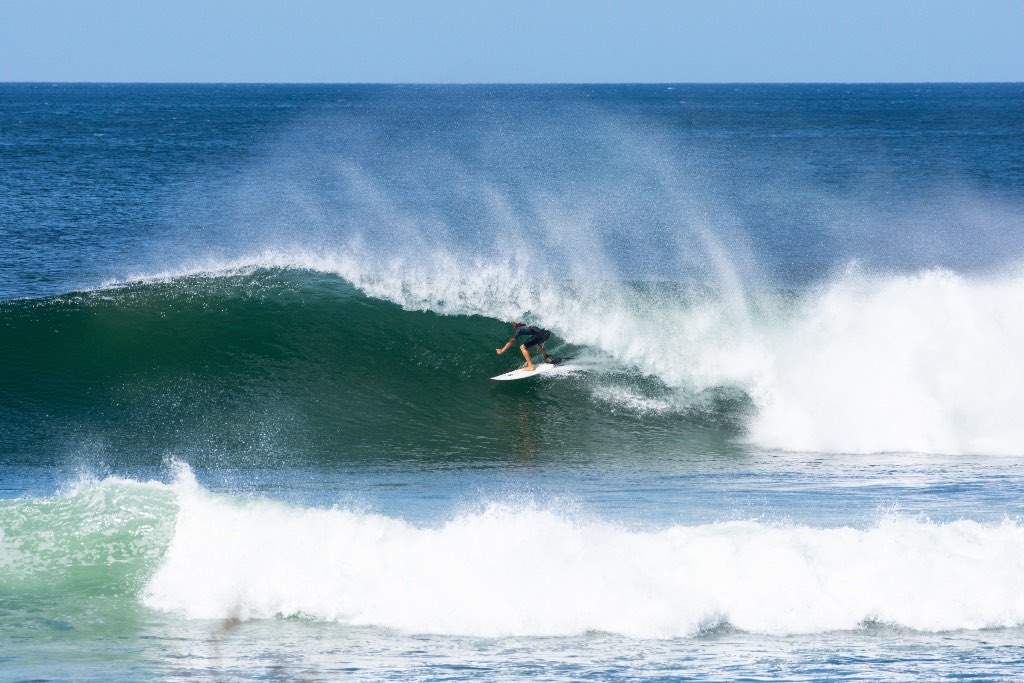
Playa Negra
This surf break is an epic, barreling reef break located in Guanacaste. It is about a 90 minute drive from the Liberia airport, and a 45 minute drive from the popular surf town in Tamarindo.
If you are looking to get barreled in Costa Rica, this is the surf spot to go to.
For more on surfing Playa Negra, including where to stay and eat after, check out my Playa Negra Surf Guide.
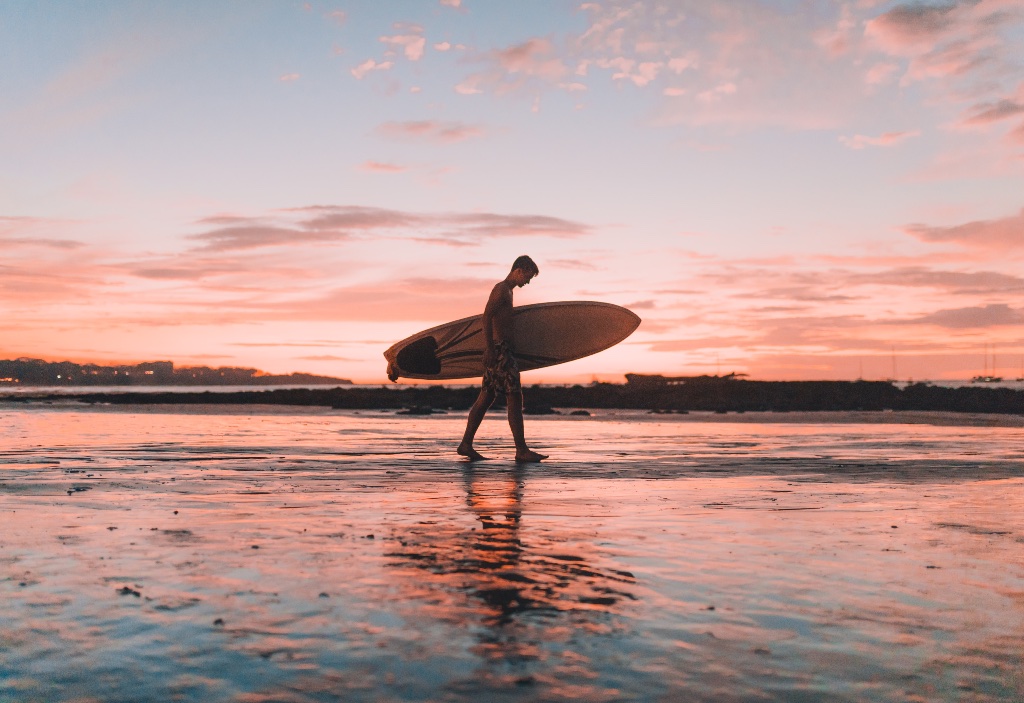
Playa Tamarindo
Playa Tamarindo is a popular beach break located in Guanacaste. It isn’t the best wave in the country, but it is consistent, and located in a beachfront party town Tamarindo so there is plenty to do here besides surf.
Tamarindo is about a 90 minute drive from the Liberia airport, and due to its central location to many other nearby surf spots, it’s a great option to make your home base on your Costa Rica surf trip.
For more on surfing Playa Tamarindo, including where to stay, eat, and what to do besides surf, check out my Playa Tamarindo Surf Guide.
Witches Rock
Witches Rock is one of the absolute dreamiest waves in Costa Rica. It is located in Guanacaste at Playa Naranjo.
Witches Rock surf Spot in Playa Naranjo is located within Santa Rosa National Park. As of 2021, the only way to get there is by boat access.
Fun fact: this surf break got its name from the howling winds that reverberate from the large rock.
Playa Grande
Playa Grande is another surf spot located just outside of Tamarindo. In fact, the break itself is only a few miles north of Playa Tamarindo, and you can easily see Playa Tamarindo from Playa Grande.
However, due to a large estuary, you have to drive a fairly roundabout route to get to Playa Grande, and it takes about 40 minutes to reach this break from Tamarindo.
With the right swell, this is an epic surf spot.
It’s a powerful, sometimes hollow wave, with multiple peaks created by scattered sandbars on the beach.
When the surf is good, it can get quite crowded here, and the crowd can be a little agro.
This surf spot is very easy to access, as it has a parking lot right in front of it.
There’s also a burrito place right next to the parking lot, so you can grab a bite (or a drink!) after your surf.
As always, don’t forget to tip your parking attendant!
Playa Avellanas
Playa Avellanas is a wonderful surf spot located about 35 minutes south of Tamarindo.
This break is also known as “Little Hawaii” due to its crystal clear water and peeling waves.
There are multiple surf breaks at Playa Avellanas. When you arrive in the parking lot, directly in front, you’ll see plenty of longboarders.
There are fun little peaks directly in front of theparking lot, and over to the right.
If you walk a little further down the beach, about a ⅓ of a mile, you’ll reach two bigger beach breaks.
With the right swell, both of these breaks will come alive and become absolutely rippable for shortboarders. It can become a powerful wave, and can hold pretty much any size the Pacific throws at it
When it’s smaller, this is still an awesome break for longboarders and shortboarders alike.
For a more in-depth guide, check out my Playa Avellanas Surf Guide!
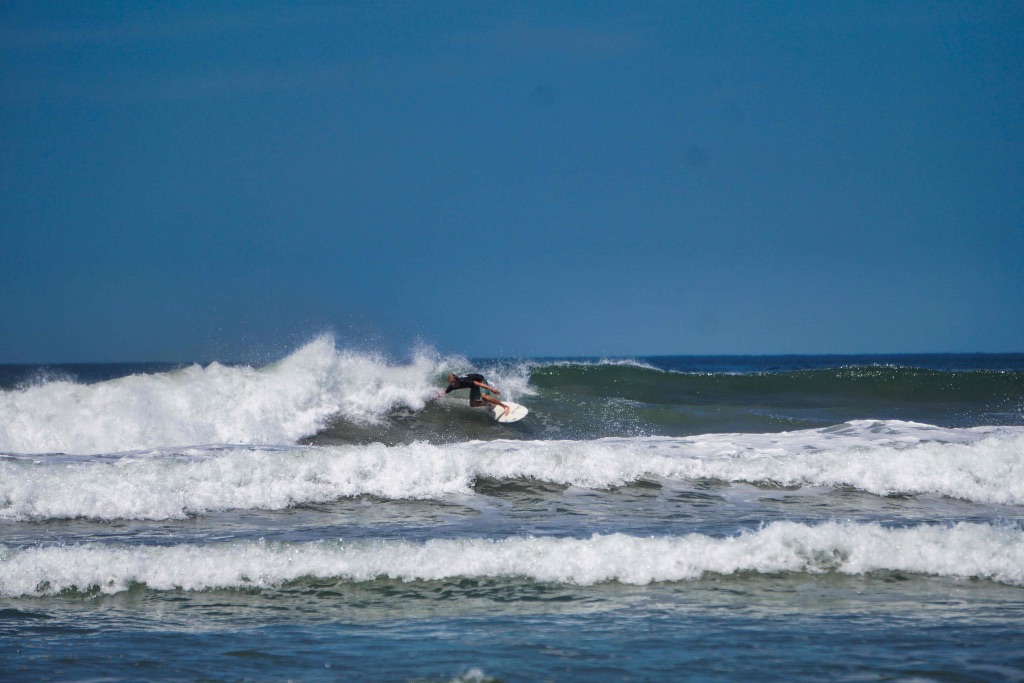
Nosara
Nosara is one of my all time favorite surf spots in Costa Rica. Before we dive into the surf though, I’ll explain a few misconceptions about the name of the towns, and surf.
The actual town of Nosara is a small, local town located about 15 minutes, or 8km from the beach itself.
The touristy part of this area is known as Guiones, which encompasses a few dirt roads scattered with a mix of restaurants, shops, and fancy expat houses.
Playa Guiones is where you go surf in “Nosara”. It is a long, sandy beach break that houses some of the most consistent surf in all of Costa Rica.
Playa Guiones doesn’t exactly have a world class wave shape- it is a beach break after all. But it’s a really fun wave. And, you can pretty much surf here 365 days a year. No joke.
And it is for that reason why this area is becoming one of Costa Rica’s most beloved by tourist surf towns.
What really makes this beach special, (besides the surf!) is the nature protection laws that prohibit any sort of construction within a cerain distance of the beach.
This legislation keeps the beach pristine, and will hopefully continue to protect it from overdevelopment.
For more information on surfing in Nosara, check out my all-encompassing Surfing Nosara Guide.
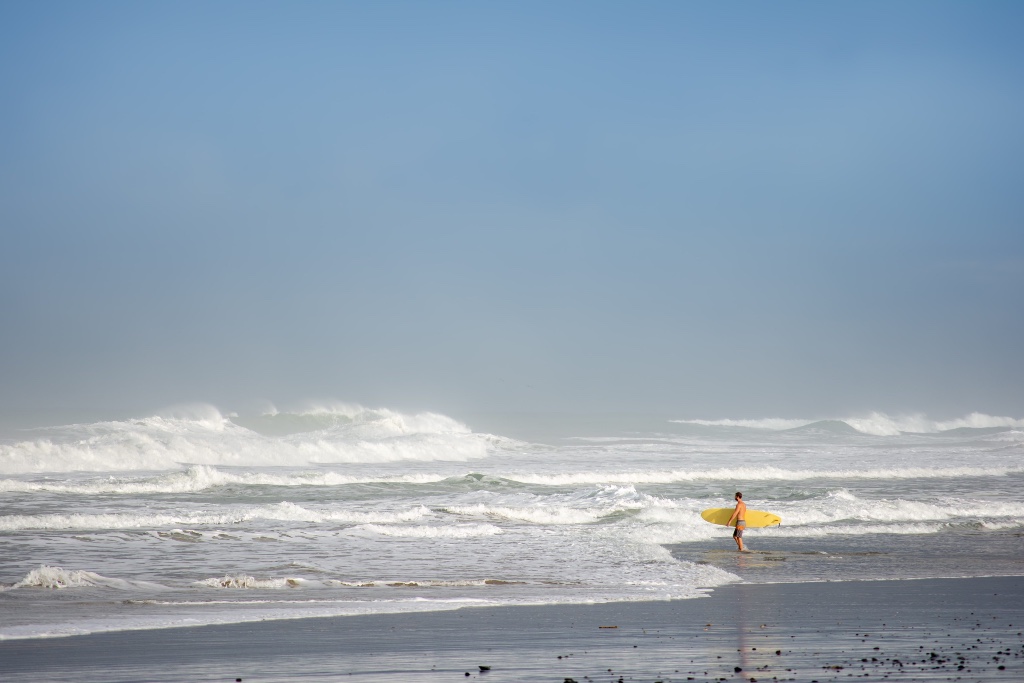
Playa Santa Teresa
Anyone planning a Costa Rica Surf Trip should put Santa Teresa on their radar- if it’s not already.
This surf town is located on the southernmost tip of the Nicoya Peninsula, and it is seriously awesome.
The beaches stretch several miles long, and there are four different surf breaks here that are suitable for beginner surfers, to more experienced surfers!
Much like the Nosara area, Santa Teresa picks up tons of swells, so if you’re planning a Costa Rica surf trip, and want to be pretty much guaranteed surf, Santa Teresa is a fair bet.
This town has a fairly big party scene as well, so if you’re looking to party on your surf trip, you’ll certainly be able to do so here. Santa Teresa has a really fun backpacker scene too, and I believe it’s the top Costa Rica surf towns for backpackers.
If you’re seeking out peace and quiet, you can still find that in Santa Teresa by booking an airbnb or accommodations further up the hill from the main road.
For a more detailed explanation on each surf spot in Santa Teresa, check out my Santa Teresa Costa Rica Surf Guide.
Central Pacific Costa Rica
The Central Pacific region of Costa Rica is the span of land that stretches from just a little North of Jaco, all the way until just past Uvita.
This region is quite different from Guanacaste. It is far more lush, green, and not nearly as dry.
Central Pacific Surf Spots
The Central Pacific of Costa Rica doesn’t have quite as many surf spots as Guanacaste. However, what it lacks in quantity, it certainly makes up for in quality.
Jaco
Jaco (pronounced haw-ko) is a bustling beach town about a two hour drive from San Jose. This town is quite built up and definitely not the safest beach town in Costa Rica.
If you’re looking for nightlife, ease of access, and to do a little shopping and surf mediocre waves- Jaco is the place for you.
The surf in Jaco is all a beachbreak that closes out over 4 feet in size.
The surf in the very south end near all the surf shops is best, although the northernmost part of the beach can offer some decent corners as well on higher tides.
Be sure to not leave anything on the beach while surfing here, as theft here is rampant. For more information on surfing in Jaco, check out my in-depth Jaco surf guide.

Playa Hermosa
Playa Hermosa is a very special surf break in Costa Rica, and might even deserve the title of having the best surf in Costa Rica.
This break is located just south of Jaco, tucked away from hustle, bustle and chaos of that large beach city.
The break here is a breach break, and while it has plenty of peaks and breaks scattered throughout the beach, when the wave is really working it is a powerful, intermediate-expert level wave.
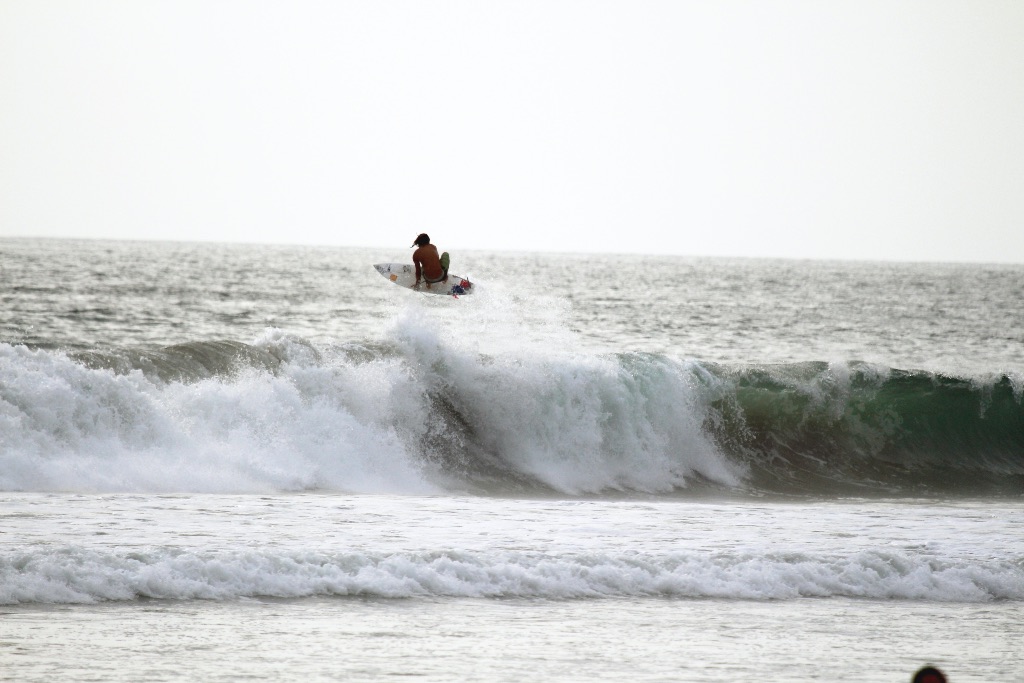
Playa Dominical
Playa Dominical is one of the most infamous surfing beaches in Costa Rica. It is located on the Central Pacific Coast of Costa Rica, about a 100km south of Jaco.
The reason I say the surf in Dominical is infamous, is due to its power, monstrous size, and treacherous rip currents.
The break here is a sandy beach break. The reason it gets so big here and holds its size, is due to the large river adjacent to the break that digs out a channel and allows the bigger swells to hold up.
Where there is a large swell, the waves here can be 20 feet plus, and only surfed by big wave surfers.
However, when there isn’t a large swell in the water, typically in the dry season, Playa Dominical can be a playground for all surfers- just remember to exercise caution here, as conditions can rapidly change.
For more information on the surf in Dominical, check out my all-inclusive Dominical surf guide.
Playa Dominicalito
If you’re in the Dominical region on a big swell and want to surf some smaller, more gentle waves, then Playa Dominicalito could be for you!
Playa Dominicalito is located just a few kilometers drive south of Dominical. It’s a sheltered beach break, so if Dominical is way too big to surf, then you may have luck with some smaller waves at Playa Dominicalito.
Southern Pacific Costa Rica
The Southern Pacific region of Costa Rica is quite different from the Central Pacific and Nicoya Peninsula both in its geography and surf.
This region is far more lush, green, and wet- and many say that it is also home to the best surfing in Costa Rica.
However, these spots really only turn on with some powerful Southern swells which are much more prevalent in the rainy season of Costa Rica.
Southern Pacific Surf Spots
With so much exposed coastline, there are a myriad of surf spots in the Southern Pacific of Costa Rica. However, some are more well known than others, so I recommend exploring this region for yourself to find the real hidden gems!
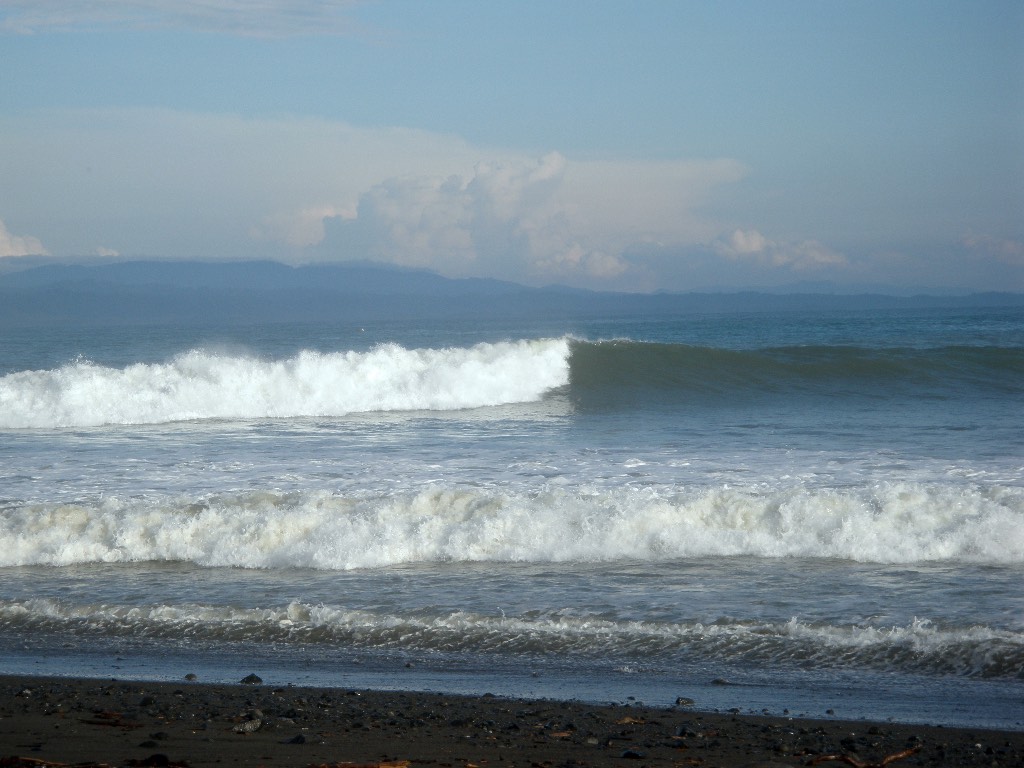
Playa Pavones
The most popular and best surf spot in the Southern Pacific region of Costa Rica is without a doubt- Playa Pavones.
Pavones is located in the Osa Peninsula. The closest major town in the area is Golfito, which you can fly into from the San Jose Airport.
Pavones is quite special in that it is the second longest left breaking wave in the world.
Goofy footers rejoice- you’ll have an epic time in Playa Pavones.
However, there really isn’t much in Pavones besides the wave. Additionally, you’ll want a rental car to get around this region.
Caribbean
When surfers talk about taking a surf trip to Costa Rica, they usually don’t mention the Caribbean side.
The Caribbean side of Costa Rica is more rugged, lush, wet, and wild than the rest of Costa Rica. And so is its surf.
Costa Rica Caribbean Surf Spots
The Caribbean “El Caribe” has tons of coastline, however, the three surf spots I visited on my Costa Rican surf trip were all in the Puerto Viejo region, which happens to also be the most popular area of Costa Rica.
I visited in February during a period with heavy swells and stormy waters. At this time, the waves were best left to experts.
However, on small, clean, and sunny days, these breaks (except Salsa Brava!) seem a lot more welcoming.
Salsa Brava
If Puerto Escondido is the Mexican Pipeline, then Salsa Brava is the Costa Rican Pipeline. This wave located in Puerto Viejo is heavy, unforgiving, and is a heavy reef break.
This is definitely an expert-only type of wave. However, it is still fun for the rest of us to sit back and watch the surfers going for it here!

Playa Cocles
Playa Cocles (pronounced like “coh-clays”) is also located in the Puerto Viejo region. More specifically, it is located about 4km south of the heart of Puerto Viejo, in the Punta Cocles area.
Playa Cocles is the most intermediate-friendly surf beach in the Puerto Viejo area. There are actually some rideable green waves here, but it isn’t terribly heavy.
Plus, this beach and area is incredibly beautiful and worth checking out, regardless of the surf!
Playa Negra
Playa Negra in Puerto Viejo is a tiny, right hand breaking wave that is suitable for beginners! Keep in mind, this is not to be confused with Playa Negra in Guanacaste!
It is located on the North side of Puerto Viejo, and it is a black volcanic sand beach (thus the name, Playa Negra).
The break is located right next to a shipwreck, giving it an eerie but cool tropical vibe.
If you’re looking to surf in Puerto Viejo as a total beginner and Playa Cocles is a little too big, this is the place to go- although it will likely be very crowded.
If you’re planning to visit Puerto Viejo, check out my in-depth Puerto Viejo surf guide for more information.
Costa Rica Surf FAQ’s
When is the best time to surf Costa Rica?
The best time to come to surf in Costa Rica depends on a few factors, namely what exactly you are looking for out of a surf trip.
If you’re looking for small, clean, fun, and consistent waves, you should come in the dry season.
If you’re looking for heavier swells, bigger surf, and less tourists, you should come in the rainy season!
Should I bring a board or rent one?
If you’re planning a long surf trip to Costa Rica you’ll probably want to bring a surfboard or buy one in Costa Rica.
If you’re not picky and can afford paying $25/day for a rental board, then go ahead and rent a board.
For more information on deciding to rent a board or bring one to Costa Rica, check out my in-depth post on traveling with a surfboard in Costa Rica!
Is Costa Rica safe?
There is a lot of fear and stigma surrounding travel to countries in Latin America.
It’s a good idea to exercise certain precautions wherever you are, such as:
- not walking alone at night
- being aware of what’s in your drink, etc.
With that said, Costa Rica is one of the safest places I’ve ever been to. It’s certainly safe enough for a surf trip!
The main thing to be mindful of in Costa Rica is theft. Don’t leave any valuables in your car, and always take care to lock up your house/ rental apartment/ hotel room whenever leaving.
What is there to do in Costa Rica besides surf?
Sometimes our nonsurfer friends like to tag along on a Costa Rican surf trip, so you’ll want to be sure that there are things for them to do as well!
Luckily, Costa Rica has a plethora of activities to do besides surf, including:
- Relax on the beach
- Explore waterfalls like Rio Celeste
- Visit the cloud forest of Monteverde
- Enjoy the local food
- Listen to music
There is a ton of live music in Costa Rica!
And more! If you’re looking for a more specific itinerary, check out my 1 week in Costa Rica itinerary.
Final Thoughts on the Ultimate Costa Rica Surfing Guide
That’s a wrap on the ultimate Costa Rica surf guide! I hope that this guide helps inspire you for your next surf trip!
Costa Rica is truly one of the most magical surf destinations I’ve ever encountered.
Surfers of any level are sure to appreciate the joy and beauty of this tropical surfing paradise.
Let me know in the comments- which Costa Rica surf spot do you want to visit?


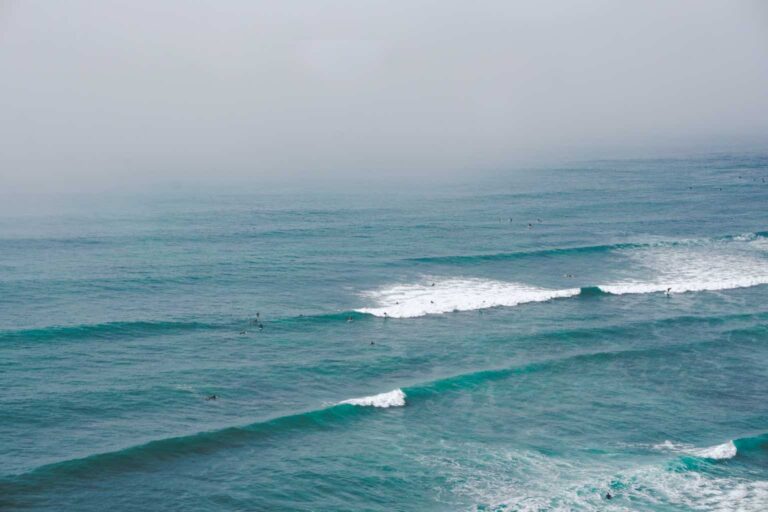
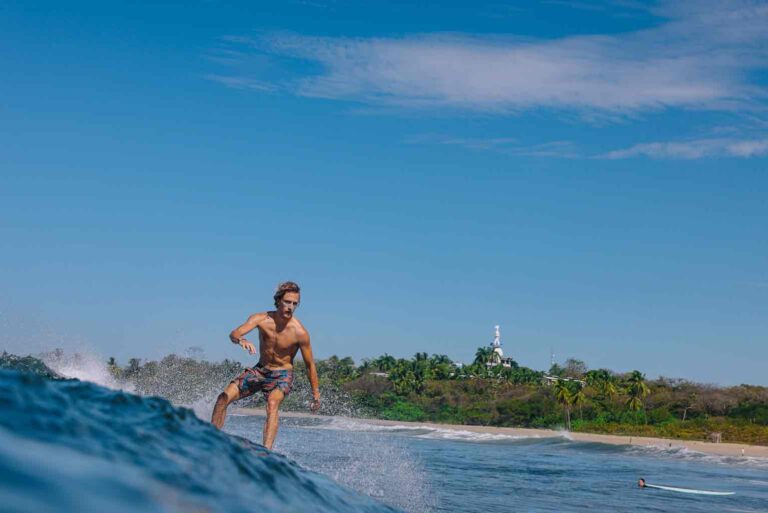

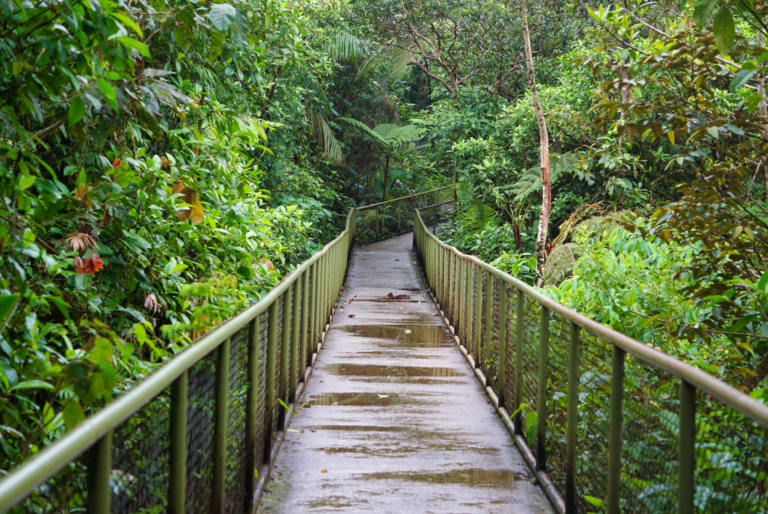

HI Haley
Great article and guide to Costa Rica surf scene.
I am a keen sup surfer intermediate level.
What area and sites would you recommend for sup surfing .
Wave size 2 to 6 ft